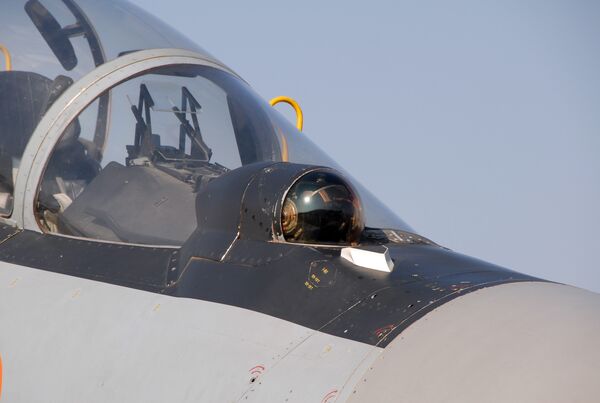
Indian Air Force Sukhoi Su-30 MK1s have old-generation optical locator sensors (OLS). The Indian Ministry of Defence hopes to replace these with ingeniously-built IRST systems. (Janes/Patrick Allen)
Hindustan Aeronautics Limited (HAL) and Bharat Electronics Limited (BEL) have signed a contract for the joint development and production of a new infrared search and track (IRST) system.
In a statement released on 26 April, HAL said that the long-range dual-band IRST system will be deployed aboard Indian Air Force (IAF) Su-30 MK1 multirole fighter aircraft.
The company added that the development of the system will be under the MAKE-II procedure of Defence Acquisition Procedure (DAP) 2020.
According to HAL, one of the conditions of the proposed IRST is that it must be technically competitive to existing IRST systems in the global market. The system must have “features of television day camera, infrared, and laser sensors in a single window for air-to-air and air-to-ground target tracking and localisation”, HAL said in the statement.
India's Ministry of Defence (MoD) had earlier sought the development of an indigenous IRST system under the Defence Procurement Procedure (DPP) 2016.
In its 2016 invitation for an expression of interest (EOI) for the project, the MoD said that Su-30 MKI aircraft relies on an old-generation optical locator sensor (OLS).
“There exists a need to replace this system with the latest generation system with better operational capability, maintainability and improved reliability,” the MoD said at the time. “Indigenous development of such systems will ensure achievement of self-reliance in the field of electro-optical/infrared (EO/IR) sensors.”
Looking to read the full article?
Gain unlimited access to Janes news and more...



